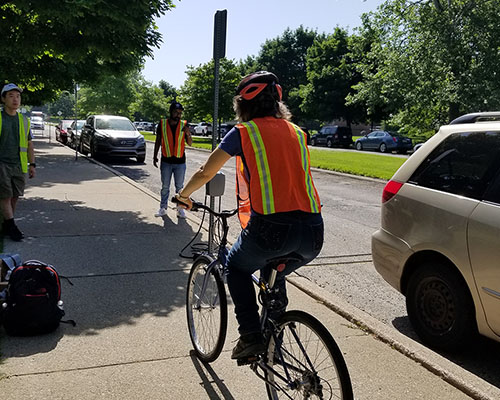Project Details
Abstract
 To design roadway infrastructure for comprehensive safety of all users, understanding exposure is essential. Current count and volume estimation methods primarily focus on vehicular traffic, leaving a gap in exposure data for other supplemental traffic modes. There is also a lack of guidance on supplemental traffic count programs for optimum coverage across regions. Partial guidance on counting programs is available from sources such as the Federal Highway Administration’s Traffic Monitoring Guide. However, all these documents describe the design of a full-scale supplemental traffic counting program as being dependent on and informed by small scale pilot programs. The proposed project will develop guidance for Colorado Department of Transportation (CDOT) to develop a statewide full scale supplemental traffic count program.
To design roadway infrastructure for comprehensive safety of all users, understanding exposure is essential. Current count and volume estimation methods primarily focus on vehicular traffic, leaving a gap in exposure data for other supplemental traffic modes. There is also a lack of guidance on supplemental traffic count programs for optimum coverage across regions. Partial guidance on counting programs is available from sources such as the Federal Highway Administration’s Traffic Monitoring Guide. However, all these documents describe the design of a full-scale supplemental traffic counting program as being dependent on and informed by small scale pilot programs. The proposed project will develop guidance for Colorado Department of Transportation (CDOT) to develop a statewide full scale supplemental traffic count program.
The objective of this study is to conduct a small-scale pilot supplemental counting program to test approaches identifying count location/distribution, technology use, and calculation of key statistics that would be available from a well-designed count program (such as crash/fatality rates). The outputs of this research effort would inform CDOT senior management and other practitioners when creating a detailed design and schedule for a full-scale supplemental traffic counting program. For researchers, this will provide a robust data driven framework for identifying supplemental traffic count locations. Furthermore, machine learning and statistical models for estimating and predicting supplemental traffic volumes using open source, readily available data will also be produced as part of this project.
In addition to the aforementioned goals of the project, during multiple preliminary meetings with the CDOT team, the research team identified an additional need—creating a training program for the contractors who will collect the supplemental traffic data in the field. It is understood that, like the established vehicular traffic count program, a mature supplemental count program will rely on contractors for the data. The project team deemed it necessary that any contractor selected to collect supplemental traffic data via bidding would have to take a mandatory standardized training program. The project thus now focuses on contractor training and sample data collection during the training, field data collection post-training for a set of sites with different location characteristics (rural/urban/arterial, etc.), and identifying permanent counter locations based on the data collected, factors identified in the literature, and other available data.
Project Word Files
project files
- UTC Project Information (Word, 87K)
Note to project PIs: The UTC document is limited to two pages. Also, it would be helpful if the Track Changes feature is used when editing either document above. Updated documents should be emailed to ndsu.ugpti@ndsu.edu.